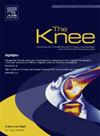Efficacy and systemic safety of adding intra-articular dexmedetomidine as adjuvant therapy to bupivacaine for post-operative analgesia in knee arthroscopic procedures: a systematic review and meta-analysis
IF 2
4区 医学
Q3 ORTHOPEDICS
引用次数: 0
Abstract
Background
Various analgesic methods have been evaluated for knee arthroscopy, but adequate pain control after arthroscopic procedures has been a challenge. This meta-analysis compares intra-articular bupivacaine with intra-articular bupivacaine plus dexmedetomidine, for post-op pain control after knee arthroscopy.
Methods
Adhering to the PRISMA guidelines we performed a thorough literature review and selected all the studies meeting our inclusion criteria (CD42024559371). Quality assessment was performed using the ROB II tool. A Random Effect (RE) model was used for analysis.
Results
Eight studies with 386 patients met the inclusion criteria. Combining Dexmedetomidine with Bupivacaine delays the need for first analgesic use compared to Bupivacaine alone (SMD: 4.09, 95 % CI [2.61 to 5.57], p < 0.00001). Adverse events were minimal and comparable between groups in most studies. For patients who underwent knee arthroscopy under spinal anesthesia, Visual Analogue Scale scores at rest (VAS-r) and VAS scores during movement (VAS-m) showed significant differences favoring Bupivacaine and Dexmedetomidine from 4 h onward. VAS-m and VAS-r scores of patients who received general anesthesia displayed significant differences favoring Bupivacaine and Dexmedetomidine at 4 h only (SMD = −2.82 (95 % CI [−3.77 to −1.86], p < 0.00001, I2 = 55 %) and (SMD = −1.57 (95 % CI [−2.02 to −1.11], p < 0.00001, I2 = 0 %), respectively.
Conclusion
The combination of bupivacaine and dexmedetomidine for managing post-arthroscopic pain offers superior pain relief compared to bupivacaine alone, especially under spinal anesthesia. Further research is warranted to confirm these findings.
Plain language summary
Adding dexmedetomidine to bupivacaine significantly delays the need for the first analgesic dose after knee arthroscopy.
Pain relief is superior, especially under spinal anesthesia, with improved pain scores at rest and during movement from 4 h onward.
Adverse effects are minimal and comparable to bupivacaine alone, in most studies.

膝关节镜手术中加入关节内右美托咪定辅助布比卡因术后镇痛的疗效和全身安全性:一项系统综述和荟萃分析
背景:各种镇痛方法已经被评估用于膝关节镜检查,但关节镜手术后适当的疼痛控制一直是一个挑战。这项荟萃分析比较了布比卡因关节内注射与布比卡因关节内注射加右美托咪定对膝关节镜术后疼痛控制的效果。方法根据PRISMA指南,我们进行了彻底的文献综述,并选择了所有符合我们纳入标准的研究(CD42024559371)。使用ROB II工具进行质量评估。采用随机效应(RE)模型进行分析。结果8项研究386例患者符合纳入标准。与单独使用布比卡因相比,右美托咪定联合布比卡因延迟了首次使用镇痛药的需要(SMD: 4.09, 95% CI [2.61 ~ 5.57], p <;0.00001)。在大多数研究中,两组之间的不良事件很少且具有可比性。对于在脊髓麻醉下接受膝关节镜检查的患者,静息时视觉模拟评分(VAS-r)和运动时视觉模拟评分(VAS-m)从4小时开始显示布比卡因和右美托咪定的显著差异。接受全身麻醉的患者VAS-m和VAS-r评分仅在4 h时显示布比卡因和右美托咪定的优势有显著差异(SMD = - 2.82) (95% CI[- 3.77至- 1.86],p <;0.00001, I2 = 55%)和(SMD =−1.57(95%可信区间(−2.02−1.11),p & lt;0.00001, I2 = 0%)。结论布比卡因联合右美托咪定治疗关节镜后疼痛优于布比卡因单用,特别是在脊髓麻醉下。需要进一步的研究来证实这些发现。在布比卡因中加入右美托咪定可显著延迟膝关节镜术后首次镇痛的需要。疼痛缓解是优越的,特别是在脊髓麻醉下,休息和运动时的疼痛评分从4小时开始改善。在大多数研究中,副作用很小,与单独使用布比卡因相当。
本文章由计算机程序翻译,如有差异,请以英文原文为准。
求助全文
约1分钟内获得全文
求助全文
来源期刊

Knee
医学-外科
CiteScore
3.80
自引率
5.30%
发文量
171
审稿时长
6 months
期刊介绍:
The Knee is an international journal publishing studies on the clinical treatment and fundamental biomechanical characteristics of this joint. The aim of the journal is to provide a vehicle relevant to surgeons, biomedical engineers, imaging specialists, materials scientists, rehabilitation personnel and all those with an interest in the knee.
The topics covered include, but are not limited to:
• Anatomy, physiology, morphology and biochemistry;
• Biomechanical studies;
• Advances in the development of prosthetic, orthotic and augmentation devices;
• Imaging and diagnostic techniques;
• Pathology;
• Trauma;
• Surgery;
• Rehabilitation.
 求助内容:
求助内容: 应助结果提醒方式:
应助结果提醒方式:


